After the capricious reign of Muhammed bin Tughlaq, his cousin, the devout (and even bigoted!) Firoz Shah Tughlaq (1351-1388 A.D.) became Sultan. Firoz Shah inherited, thanks largely to the disastrous policies of his predecessor, nearly empty coffers and a disintegrating empire. This did not stop him from embarking on a vigorous campaign of building, and in the words of a contemporary historian he was eventually responsible for “1200 gardens around Delhi…200 towns, 40 mosques, 30 villages, 30 reservoirs, 50 dams, 100 hospitals, 100 public baths and 150 bridges.” These claims are no doubt exaggerated but underscore his interest in architecture.
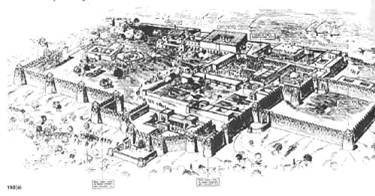
The architecture of Firoz Shah is stern, utilitarian, almost tragic – at times hauntingly lovely, and at times warningly forbidding. This is due in no small measure to its rough exposed finish (the glazed tiles having come off a long time ago) as well as the lack of skilled masons and sufficient capital.
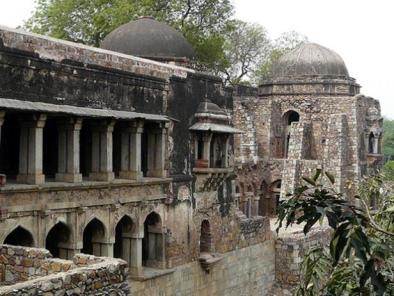
Firoz Shah built a new capital city on the banks of the Yamuna, called Firoz Shah Kotla, thereby abandoning the old fort-city of Tughlaqabad. Apart from the desire of the new Sultan to make his mark, this decision could also have been prompted by an increasingly irregular water supply at Tughlaqabad.
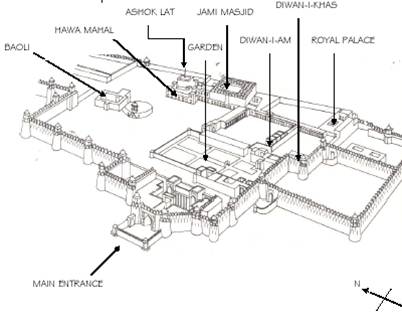
The king’s quarters as well as those of his wives and concubines were situated along the river-front. Within the perimeter walls of the fort were structures serving as barracks, armories, rooms for servants, halls for audience, an imposing mosque, as well as public and private baths, a stepped well or baoli, and an Ashokan pillar removed from Ambala and mounted on top of a pyramidal three-tiered construction. Symbolically, this was an icon of the Sultan’s supremacy in North India, very much like the Gupta Iron Pillar in the Q’uwwat-ul-Islam mosque at the Qutb.
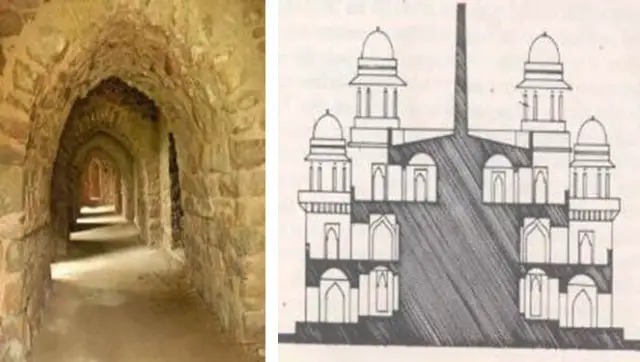
The northern part of the Kotla still has a baoli (a deep well surrounded by underground rooms) where the atmosphere is fresh even on the hottest day of summer. The three-tiered structure of a small and functional baoli is near intact. The water supply runs through transverse pipelines And cistern provisions, harnessing to advantage its prorjmitv to the river which then flowed below the ramparts.
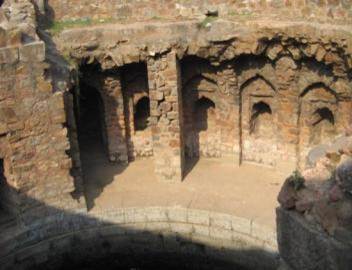
The Hawa Mahall still stands in the form of a stepped pyramid with diminishing floors, which are linked with private rooms via a secret corridor in the western wall of the Jami masjid, now for the most part in ruins. The triple-storeyed construction to vaulted cell around r solid core with stairs at the comers leading to the uppermost terrace where the Ashokan pillar is planted.
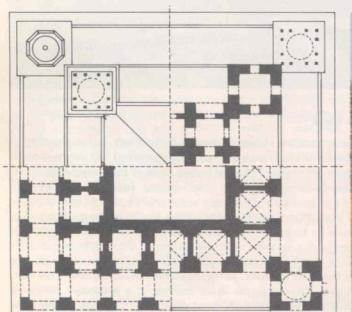
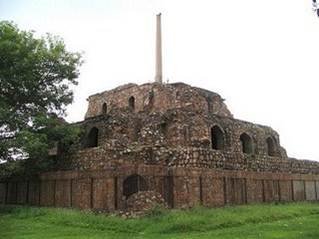
Ashokan Pillar Features of Ashokan pillars in Delhi The four lions of the Ashokan Pillar in Delhi are the main features of the historic monument. There are also non-religious interpretations to the symbolism of the pillars, describing the four lions as the symbol of Ashoka’s rule over the four directions. Located north of Jami Masjid in the citadel stands the 13 meters high sandstone Ashokan Pillar on a rubble-built three-tired pyramidal structure. Feroz Shah Tughlaq brought this 27 tonne pillar to Delhi from Topar in Ambala, where the great Emperor Ashoka erected it. The pillar is similar to the one fixed on the ridge, which was also brought by Feroz Shah.
The pillar has seven main inscriptions or edicts of Emperor Ashoka, a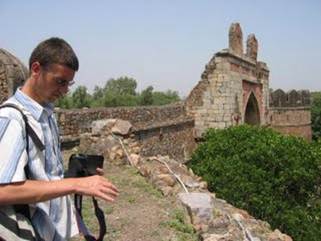 part from some figures and many minor inscriptions. Though made of sandstone, the pillar was so polished that till date it looks as if it is made up of some metal. The pillar was later called as Minar-i-Zarin as Feroz Shah ornamented the pillar during his reign.
part from some figures and many minor inscriptions. Though made of sandstone, the pillar was so polished that till date it looks as if it is made up of some metal. The pillar was later called as Minar-i-Zarin as Feroz Shah ornamented the pillar during his reign.
The Jami Masjid at Kotla has survived in its open spectacular courtyard and a portion of the western wall. Raised on a terrace of vaulted chambers, the mosque could accommodate nearly tenthous and men at prayer. According to Franklin who visited the mosque m 1793, it had four cloisters, the domed roofs of which were supported by 260 stone columns, each about 5m high. The centre of the courtyard lay under an 8m high brick and stone octagonal dome.

The king’s quarters as well as those of his wives, harems and mosques along the riverbank to the north and south are divided into various rectangular and square courts. In each there were different activities: ‘such as pavilions of differing uses, tree-lined gardens with water, baths, fountains, barracks, armories and the servants’ quarters, all arranged so as to be connecting.’ Descriptive accounts mention mirrored halls, as well as sandalwood sculptures and figural and landscape murals.
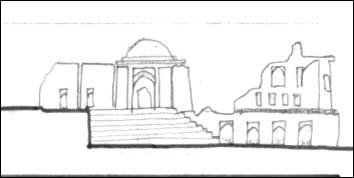
MY CRITIQUES ON FEROZ SHAH KOTLA
- Architecturally, fort that which has become a ruin at the moment is of not much variant with any other architecture Islamic architectures brought about and built in India by numerous Islam Leaders. The arches and courtyards, the mosque, and all, its quite evidently constructed.
- The main point of discussion in Feroz Shah Kotla could be the massive usage of the Crude masonry used here. The stone masonries and unfinished surface could well be dude to the reason of economic crack down during Feroz Shah Tuqlak’ time.
- Now the fort remains in ruins, the garden created in the area, has well added to an extra features of the fort though it really doesn’t add anything extra to the fort. All in all, fort type has never been repeated for the obvious reason that it didn’t work well.

Leave a Reply
You must be logged in to post a comment.